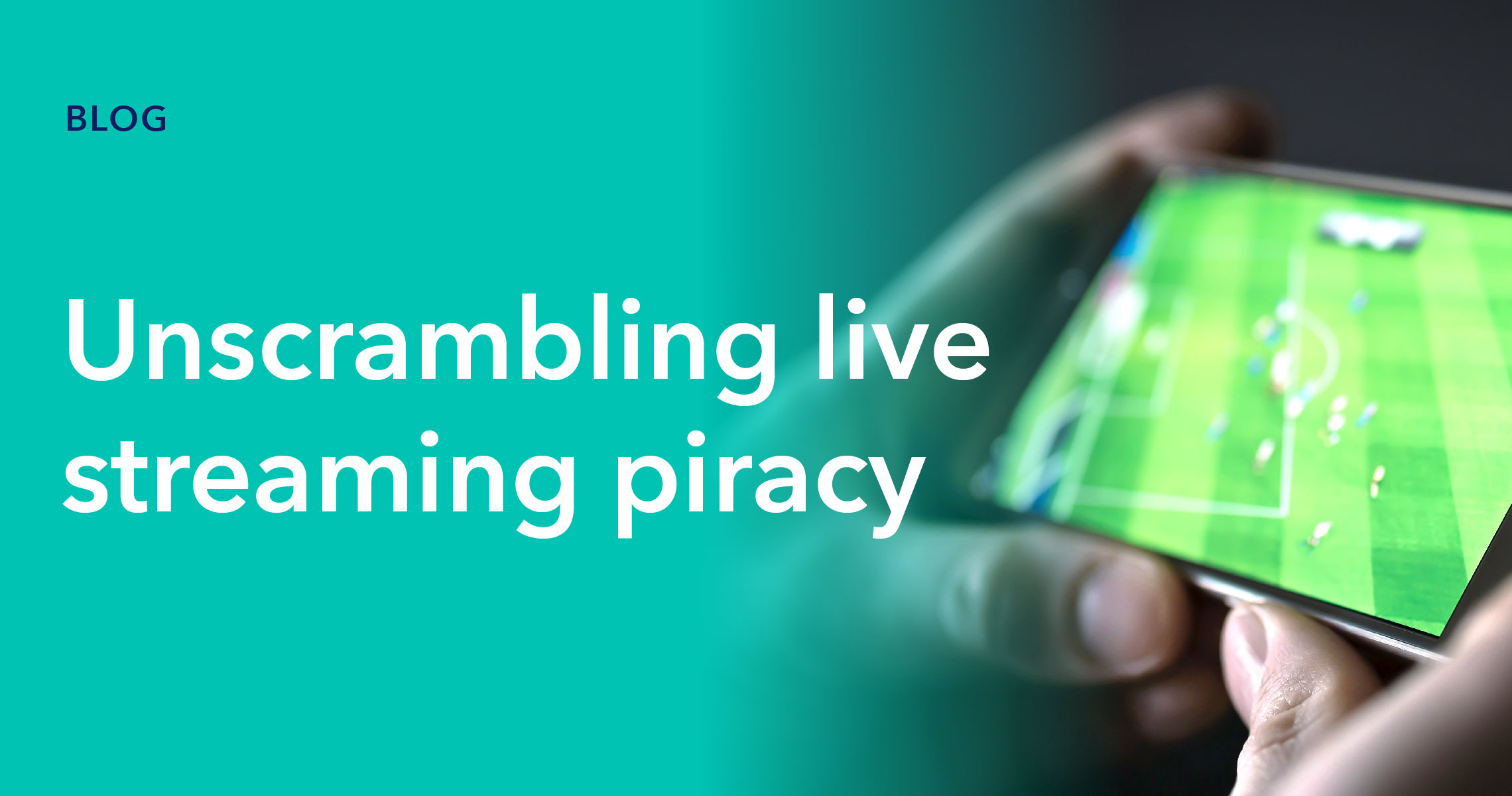In the first three parts of this series, we discussed the growth of live streaming, sports piracy, and common attack modes used in the piracy ecosystem. In this final article we’ll explore how immediate disruption and concerted legal action can work in tandem to thwart piracy and protect service revenue, and what this means for service providers who are concerned about customer satisfaction.
The challenge of low-latency streaming
Anything that introduces latency with live streaming, including the execution of DRM and watermarking processes, is problematic and can severely impact viewership and ad impression metrics. Viewers want to see what’s happening as it’s happening, especially if they’re engaging in group viewing or watching an important live sporting event, like the Super Bowl or the soccer World Cup.
Although many service providers stream live content with as little as six seconds in lag time between on-field action and on-screen rendering, over 50% of providers continue to cite latency as their top concern. This prioritization reflects how little tolerance viewers have for delays. One study found that 19% or nearly one-fifth of consumers regularly accessing online sports coverage cancel services due to delayed live streaming, further stressing the importance of low latency live streaming as a key ingredient to achieve a great user experience.

Effective protection that answers the challenge
The need for high-performance and scalable content protection coupled with the desire to minimize live streaming latency presents content providers with a major challenge. The good news is that content producers and service providers are learning that investing in aggressive countermeasures pays off. When such initiatives are mounted against sports and other live-streamed content piracy, they can have a devastating and immediate impact on illegal operations.
One successful approach is to discourage illegal streaming by sending cease-and-desist notices that call them out for engaging in illegal behavior. Another is to cut off their streams as the game is getting underway.
Viewers are sometimes unaware that what they’re watching is stolen, since piracy “service providers” are often displaying professional-looking electronic program guides, and with advertising from legit sources (which, in turn, may not be aware that they are buying ad spots on piracy platforms).
In either situation, letting them know otherwise would have a significant impact on illicit consumption. Every conversion of a “piracy viewer” to a legitimate subscriber has a direct and positive impact on the service operator’s bottom line.
In 2019, the U.K’s Sky reported that it had benefited from massive streaming disruptions to pirated English Premier League (EPL) soccer games the year before. After the league and distributors teamed together to disrupt over 200,000 illegal streams, Sky said viewership of matches carried by its service more than doubled the combined audience totals for the previous two years.
Disruption and legal action must work in tandem
The best results occur when immediate disruption and legal action work in tandem against piracy. Publicity about the successful prosecution of pirates creates a chilling effect on illicit consumption, especially when users learn of legitimate options available to stream what they’d like to watch.
Law enforcement in the Netherlands, for example, has engaged in a series of successful actions against piracy spearheaded by Vodafone, Ziggo, and the Audiovisual Anti-Piracy Alliance. In Spain, arrests in several cities in 2019 shut down a piracy network serving thousands of users in 15 countries. One study that looked at three-year trends in the U.S. and Europe and measured the effectiveness of legal enforcement combined with an increase in the availability of legitimate sports streaming services found that the use of pirate sports services dropped from 7% in 2016 to 4% in 2019.
This confidence that well-executed and concerted action against pirates will produce meaningful results has led to a surge in collaborative efforts, especially in Europe. A massive European law enforcement operation called The Perfect Storm, announced in November 2020, involved a collaboration among 19 countries and 700 police officers, which resulted in the take-down of more than 5,500 sites engaged in illicit streaming of pirated TV broadcasts, live sports, and movies. These illegal “IPTV” sites had an international audience of over 50 million viewers. It led to the investigation of 23 suspects, who ran an internationally distributed operation, and asset confiscations to the tune of 10 million Euros. It is these kinds of international co-operations that should make pirates wary.
Moving forward, the widespread adoption of comprehensive measures aimed at thwarting piracy could produce billions of dollars in recovered revenue. If just one in four pirate users are converted to a legal user, the industry could recover close to $10 billion between 2022-2024.
How can operators meet the challenge?
With the volume of live video traffic on track to exceed that of time-shifted content by 2024, an ever-increasing share of piracy will be attributable to attacks on sports and other linear content.
Pirates have been responsive to consumer demand for low-latency delivery of sports and other live content, meaning legitimate service providers must avoid imposing streaming delays on their services. Thus, distributors have to implement technology that streams their content at the lowest possible latency while also ensuring that forensic watermarking and other multi-platform content protection measures are in place. Fortunately, there are cloud-based multi-DRM and anti-piracy services readily available to deploy on short notice.
To find out more about the risks and opportunities of streamed content, and to learn about what kind of content protection solutions that should be applied, read our in-depth white paper. Feel free to reach out to our team anytime to discuss your content protection and piracy concerns.








